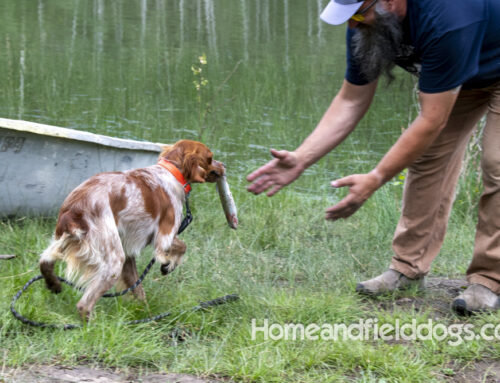Dewclaws are becoming a hotly debated topic. Tradition has always been that dew claws would be removed to prevent future injury. Yet current trend is very few people are removing dewclaws currently unless your breed standard states clearly that they must be removed.
The movement started when tail docking and ear cropping began being banned in some countries. They also stopped teaching these things in Vet school many years back so if your vet can perform these surgeries it is because they learned from a mentor in practice not a school program.
It seems nearly everyone has a horror story about a dew claw injury on a dog that had the dew claws left, but most often those stories are not first hand. Indeed if you ask your Veterinarian they likely haven’t treated a dew claw injury in an adult dog. Is this because so many have been removed or because they really don’t get injured as badly or as often as we have told ourselves?
One fact is that there are documented cases of bad dew claw injuries in adult dogs with intact dewclaws. Another fact is there are many working dogs whose Dewclaws are left intact with no ill effect over their lifetime. In fact some working breeds actually call for double dew claws in their standards.
I have always been in the camp that says lets remove them and remove the risk of injury to the dog since there is no ill effect. Like taking out your tonsils or appendix. Sure you were born with them, but leaving them leaves you at risk for many health problems.
Also I love to have my dogs “hug” me and I assure you this is far more pleasant without dewclaws especially because many people don’t keep up on nail trimming, and nearly always even if they do people forget to trim the dewclaws.
That being said there was a study done specifically with cattle dogs showing how the dewclaw was an anchor point in those dogs doing cattle work and having that anchor point put less strain and injury on other joints, tendons etc. It was peer reviewed and a sound article leaving me to conclude for working cattle breeds at least they did have a positive purpose for reducing injuries in their job when left intact, and there were no documented injuries to the dew claws themselves.
Another study done with agility dogs shows the dew claw is the least likely digit to be injured, and that removing it transfers the torque to the rest of the limb. The dew claws make contact with the ground during turning and galloping and provide a stabilization anchor point. Furthermore there are two muscles and 4 tendons that are attached to the dew claw, and removing the dew claw also removes the function of those.
Our French Brittany dogs and English setters are working field dogs. Running and jumping and climbing over obstacles. However studies also show dew claws have a gripping function and can even save lives of our dog when they need to grip an obstacle to prevent falling etc. It has become our position that we are no longer going to remove dew claws because science shows us it is more likely they will prevent other injuries to joints and limbs than it will be that the dew claw is torn or injured itself.






Leave A Comment